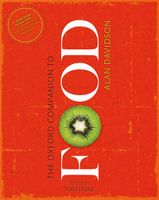Advertisement
Effects of Freezing
Published 2014
The preservative effects of cold are described under refrigeration. When food is frozen rather than merely chilled, other effects come into play. The liquids in food are not pure water, but solutions of salts and sugars; so they are still liquid at 0 °C (32 °F), and only begin to freeze at lower temperatures. The stronger the solution, the lower the freezing point. Once the liquid starts to freeze, pure ice forms and the dissolved substances pass into the remaining liquid, which thus becomes a stronger solution with a lower freezing point. The liquid therefore freezes little by little, and no water solution ever freezes completely, even in the coldest freezer—there is always a residue of very strong solution. At a certain point, however, the solution will have become too strong for micro-organisms to function, with the exception of some troublesome moulds which can grow very slowly in a freezer.


